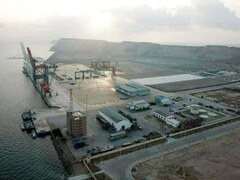SINGAPORE: China’s coal inventories are so bloated and coal prices so depressed that some of the country’s miners have cut production and called for a halt to imports, despite a scorching heatwave stoking power demand for cooling.
Scarred by a coal supply crunch and power crisis in 2021 and wary of energy insecurity risks triggered by the Ukraine war, Beijing urged miners to boost production, approved new mines and encouraged imports, which has led to record stockpiles.
That has driven benchmark prices for thermal coal with energy content of 5,500 kilocalories at northern Chinese ports down 30% so far this year to about 850 yuan ($117) a metric ton.
In some regions, spot prices have fallen below the prices agreed by miners and utilities for long-term contracts, prompting power generators to default on coal purchases even as electricity demand soars amid a heatwave.
Coal-fired power plants generate two-thirds of China’s electricity. Thinning profit margins and mounting inventories are forcing miners to scale down production, according to coal traders and China Coal Transportation and Distribution Association (CCTD) data.
At an industry seminar in late June attended by more than 30 big mining firms, participants called for authorities to let them adjust output based on market conditions and to restrict imports, according to two people familiar with the matter and a central government-backed newspaper.
However, their calls are unlikely to be heeded, as energy security remains a top priority, analysts and traders said. “The amount of coal imports in the coming months will be decided by market prices,” Li Xuegang, a CCTD analyst, said at a market briefing on Wednesday. He predicted total imports this year would climb to around 400 million metric tons, up about 22% from 2013’s record high.
China’s General Administration of Customs and National Development and Reform Commission, which is in charge of industrial production planning, did not respond to Reuters inquiries on Thursday seeking comment.
OUTPUT CUTS
Average operation rates at 442 major mines in provincial coal hubs Shanxi, Shaanxi and Inner Mongolia dropped to 82% in June from 84% in May, CCTD data showed. In May, China’s daily coal output fell to the lowest level since October 2022, according to official data, however output over the first five months of 2023 hit a record 1.9 billion metric tons of coal.
Inventories at power plants reached 200 million metric tons by end-June, 16% higher than in the same period last year, and are sufficient for 30 days of use, double the government requirement, CCTD data showed.
Stockpiles at ports grew 17% year-on-year to 74.8 million metric tons, according to information site Meitan Jianghu. The increase was driven by a 90% jump in imports in the January to May period to 182.06 million metric tons of coal, after the country resumed purchases from Australia and snapped up cheap Russian coal.






















Comments
Comments are closed.